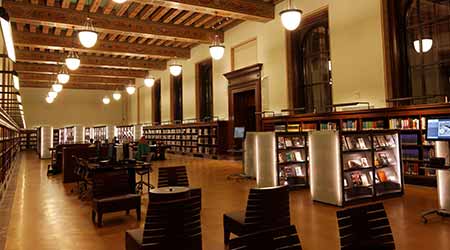 By understanding lighting product options and carefully considering installation strategies, managers will be better able to quantify upgrade results meet organizational goals.
By understanding lighting product options and carefully considering installation strategies, managers will be better able to quantify upgrade results meet organizational goals.Lighting Upgrades: Quantifying Results
Strategies to ensure lighting system upgrades help managers meet demands for aesthetics and energy efficiency
Paradoxically, quantifying the upgrade results is both the most difficult and easiest part of the process. If the installation looks good and operates as intended, and if the users appear satisfied, then managers can chalk up the project as a success.
But determining if a lighting control system is really operating as intended can take time, and if the project was predicated on energy savings, confirming and documenting the performance can be a challenge. For this reason, a good commissioning agent can be a vital part of project close-out. The agent can document the way the building is performing and identify issues or deficiencies to address prior to the contractor’s departure.
To aid in determining the lighting upgrade’s performance, technicians can use handheld meters to measure the energy use of individual lighting fixtures before and after the lighting upgrade. Since the lighting controls and their effect on the mechanical systems affect overall building energy consumption, a more wholistic approach to evaluating energy consumption is to add electrical submetering, which can be logged over time. With a more thorough picture of the way the building is operating, it is possible to assess the true energy performance of current and future system upgrades.
Successful lighting upgrades require accurate and complete design documentation from the start, realistic expectations about the results prior to construction, and having open communication during construction to work through issues that arise.
In some cases, managers can deliver more successful upgrade projects with the help of outside experts. When children are sick, parents take them to the doctor. When people plan for retirement, they talk to a financial advisor. And when a roof incurs a hole from the neighbor’s fallen tree branch, the response is to call a roofer.
Likewise, when a lighting upgrade is in consideration, not contacting a lighting professional would be a mistake. Lighting professional services range from simple studies to full-blown plan and spec projects thru construction. Certified lighting designers and registered professional engineers typically are unbiased and sell knowledge, not products.
Mark de la Fuente, P.E., is a lighting designer with Mazzetti | WmTAO, www.mazzetti.com. His 18-plus years of experience include interior and exterior lighting analysis and design for function and aesthetics, daylighting analysis, LEED lighting design, and power systems design. He has designed for a variety of building types, including airport, educational, medical, commercial, and cultural facilities.
Social media: www.facebook.com/Mazzetti.foursight, twitter.com/_mazzetti, www.linkedin.com/company/mazzetti, www.youtube.com/user/MazzettiEng.
Related Topics:














